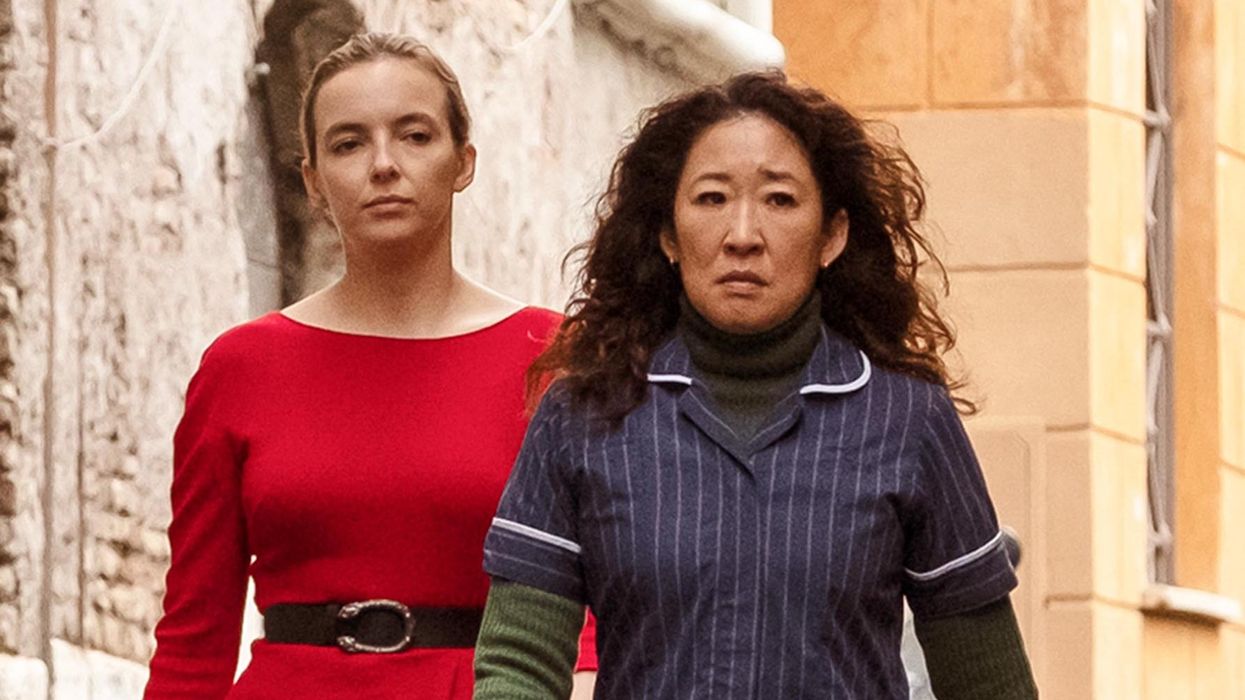'Killing Eve' Editor Gary Dollner Will Teach You to Edit with a Sense of Humor [VIDEO]
How much does a script matter to the editing process? According to "Killing Eve" editor Gary Dollner, quite a bit.

If you're a fan of sharp, fast-paced TV comedy, chances are you've seen Gary Dollner's work. The BAFTA-nominated director has worked on popular shows like Veep, The Thick of It, and more recently, Phoebe Waller-Bridge's amazing shows Fleabag and Killing Eve.
Killing Eve follows a British security operative (Sandra Oh) and a psychopathic assassin (Jodie Comer) who are intertwined in a dangerous game of cat-and-mouse. Although the show has elements from action, spy, and thriller genres, it's also a comedy.
"I don't really care about how long it took you to get that shot that looks beautiful. If it doesn't help the story, it's not going in."
Dollner sat down with BAFTA Guru to discuss how he approached editing such a nuanced work. Watch the interview below.
It all begins with the script
Since he'd worked on Fleabag already, Dollner knew what to expect from Waller-Bridge's writing. He says he enjoyed seeing her voice, and it helped dictate how he edited scenes.
"I remember reading the opening scene. There was no dialogue. But the way she had written it, I was smiling with glee, and I could just see the naughtiness with which she was approaching this post-killing scene. I just thought it was fantastic."
We've talked before about how a script can direct the eye and read as cinematic from page one. Writers, keep this in mind. Your words are meant to help everyone on every step of a creative process, not just the talent and director.

Start with the big beats
Dollner talks about his process as moving from big beats to small. Once he has an episode's major story beats in place, he then perfects the smaller subplots or emotional beats.
"That's often what is teased out in the fine cut. Once you've got the nuts and bolts of the story working, and you're down to time, and you know that all the big story beats are being hit. Then you will go in, perhaps in a bit more detail, and you play with the minutiae of looks and delivery, and the balance and rhythm. I suppose that's what we do all day long, sitting in a dark room."
Dollner also says "performance is paramount." If he feels led by a look or reaction in a certain take, he will try to build the scene around that.

The importance of introducing characters
Dollner talks a lot about editing the first scene from the first episode of the first season. It was a high-pressure moment in which he had to introduce series antagonist Villanelle (Comer), as well as convey the show's tone and sense of humor.
In the scene, Villanelle mirrors a little girl eating a sundae as the ice cream parlor employee watches. Then, as she leaves, she knocks the ice cream into the girl's lap, revealing her psychopathic tendencies.
"In some sense, that opening scene, with the looks going three ways, and Villanelle mimicking what the little girl was doing, and how she was reacting, was in a way a clue as to the psyche of her character that then got played out right across the series."
As a performer, director, or editor, remember that everything you're doing should be intentional. Everything should add to the story and to the audience's understanding of it.

If a scene doesn't work, cut it
Dollner tells the story of a beautiful, expensive scene from one episode that he knew immediately needed to go because it was slowing everything down.
"Ultimately, in the cutting room, I don't really care about how long it took you to get that shot that looks beautiful. If it doesn't help the story, it's not going in. And I think you have to be quite hard-nosed about that."
He says editors should think of themselves as a "critical friend" of the director. Editors are also like the first audience to watch a project, and if their reaction is poor, it's their job to make it better.
Dollner says it's okay for an editor to have strong opinions.
What's next? Continue your editing journey
Dollner says aspiring editors should edit as much as they can, and also watch the works of editors they admire. We've got you covered! Learn from iconic editors like Thelma Schoonmaker or Carol Littleton.
Then make sure you know the three pillars of editing, the five techniques all editors should know, and eight common mistakes to avoid.
Who are some editors you look to for inspiration? Let us know in the comments!
Source: BAFTA Guru











